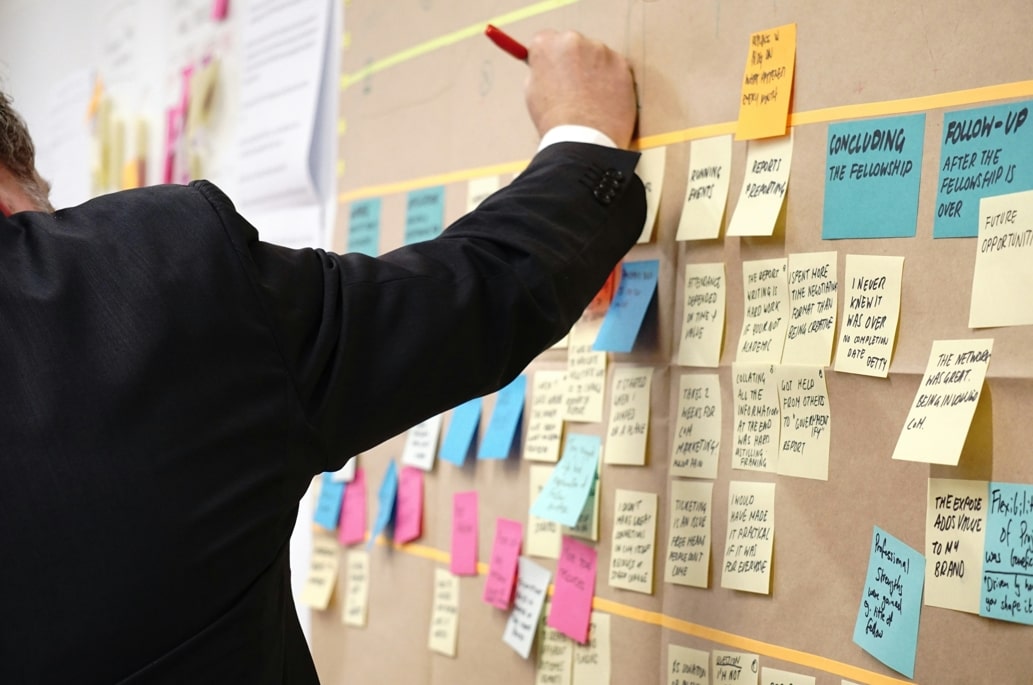Conflict is the friction that keeps your team’s engine from running smoothly — but what if you could harness it instead of letting it grind progress to a halt? Conflict management skills aren’t just about putting out fires; they’re about rewiring how your team thinks about disagreement altogether. In today’s hyper-collaborative workplaces, avoiding conflict isn’t an option — but mismanaging it costs U.S. companies an estimated $359 billion annually in lost productivity, disengagement, and attrition.
For managers, conflict isn’t a bug in the system—it’s a feature. The difference between teams that collapse under tension and those that innovate through it lies in one critical skill set: strategic conflict resolution. This isn’t about being a mediator or a therapist (put down the “How to Win Friends” playbook). It’s about deconstructing clashes into actionable insights, designing frameworks for healthy friction, and knowing when to step in versus when to let teams self-correct.
In this guide, we’ll dissect the non-negotiable conflict management skills for modern leaders, share counterintuitive strategies most training programs ignore, and reveal how the right tools can turn volatile disagreements into your team’s secret weapon.
What are conflict management skills
Conflict management skills are the deliberate practice of de-escalating friction while extracting value from disagreements. Conflict management skills are the toolkit leaders use to identify, address, and resolve clashes before they corrode trust, productivity, or team morale. But here’s the critical twist: it’s not about erasing conflict. It’s about making it work for your team, not against it.
Think of it as operating system maintenance for human collaboration. These skills include:
- Diagnostic abilities: Pinpointing whether a conflict is rooted in miscommunication (e.g., unclear project ownership), structural issues (e.g., competing KPIs), or interpersonal friction (e.g., clashing work styles).
- Intervention frameworks: Not “solving” disagreements, but structuring them. Example: Implementing a “disagree and commit” protocol for heated debates.
- Resolution architecture: Building processes that turn deadlocks into decisions (e.g., “If consensus isn’t reached in 30 minutes, the PM casts the tiebreaker vote”).
The goal is productive alignment. Teams that fear conflict waste energy tiptoeing around tensions, while those who manage it well use disagreement to stress-test ideas. For instance, Pixar’s “Braintrust” meetings institutionalize brutal feedback—but with strict rules (no ego, solutions optional). Result? Conflicts become creative accelerants.
Why this matters for managers: Your team’s conflicts are data points. A spike in disputes over deadlines? Maybe your goal-setting process is broken. Repeated clashes between departments? Signals a misaligned incentive structure. Conflict management isn’t about being a referee; it’s about being a systems engineer who uses friction to diagnose broader issues.
Training your conflict management skills

Here’s the brutal truth: Most conflict resolution training fails because it focuses on reacting to disputes, not immunizing teams against them. New leaders aren’t victims of their team’s conflicts—they’re often the source. You’re not managing conflict if your management style relies on vague goals, fuzzy decision rights, or inconsistent feedback loops. You’re farming it.
What new leaders need to unlearn
- Stay neutral: Bad advice. Attempting Switzerland-level impartiality in conflicts often amplifies resentment. Instead, train leaders to name the game: “This isn’t about Sara vs. Mark—it’s about competing priorities between speed and quality. Let’s redesign the workflow to accommodate both.”
- Focus on feelings: Emotions matter, but over-indexing on them turns managers into amateur psychologists. Teach leaders to map conflicts onto processes, not personalities. Example: If two teams feud over deadlines, dissect the approval chain, not their “lack of empathy.”
- Resolve everything fast: Forcing quick fixes to maintain harmony breeds recurrence. Instead, implement conflict pre-mortems during projects: “Where might priorities clash? What decision gates will prevent stalemates?”
Skills that actually matter for modern managers
- Preventive framing: Train leaders to set conflict protocols upfront. Example:
- Disagree and commit: When debates stall, anyone can say, “I disagree, but I’ll execute once a decision is made.”
- Red team rules: Assign someone to argue the opposition in critical meetings—depersonalizes conflict.
- Systemic triage: Teach leaders to diagnose whether a conflict is a process tumor (e.g., approvals bottleneck) or a values fracture (e.g., ethical misalignment). Each demands radically different interventions.
- Leverage asynchronous tools: Conflicts often explode in real-time meetings. Train leaders to use platforms (like your team management SaaS) to structure debates:
- Complaint → Solution protocol: Require employees submitting grievances to propose 1 actionable fix. Forces problem-solving over venting.
- Conflict Threads: Dedicated channels where disagreements are tagged with categories (Process? Priority? Personality?) to track patterns.
The real ROI of modern training
A 2023 Gartner study found teams using systemic conflict frameworks reduced recurring disputes by 67% and cut meeting times by 41%. Why? Because they stopped wasting hours “resolving” the same issues and started eliminating their root causes.
Conflict management isn’t about “handling” your team—it’s about redesigning how they collide. Invest in tools that turn clashes into structured data (hello, granular complaint tagging) and train yourself to see conflict not as failure, but as your blueprint for building better systems.
Conflict management skills that actually work
Let’s redefine the classics. Yes, communication and empathy matter—but how you apply them in a hybrid, fast-paced workplaces makes all the difference. Here’s how to upgrade traditional conflict management skills with modern execution:
Effective communication: Structure over “clarity”
Forget vague calls for “open dialogue.” Structured communication protocols prevent misinterpretation and defensiveness. Try:
- Mandatory context: Before debating, require parties to answer: “What’s your desired outcome?” and “What’s your biggest fear here?” (Psst: Build this into your team app’s conflict submission form).
- Pre-Scripted escalation paths: Example: “If this debate doesn’t resolve in 15 minutes, escalate to a silent async thread for 24 hours.”
Why It Works: Atlassian uses “communication blueprints” to predefine how teams debate priorities. Conflicts dropped by 40% because roles/rules were clear upfront.
Active Listening 2.0: Pattern hunting, not parroting
Active listening isn’t nodding while waiting to talk. Train leaders to:
- Code verbal cues: Track phrases like “This always happens” (process flaw?) or “I don’t feel heard” (power asymmetry?).
- Use data amplifiers: Example: If two teams clash over missed deadlines, visualize their workload in your team management tool. Often, conflicts dissolve when imbalances become objective.
Pro Tip: Managers at Zapier tag conflicts in their platform as “Recurring” or “One-off,” allowing them to prioritize systemic fixes over ad-hoc mediation.
See SMO in action
Try our solutions with zero commitment
Empathy with system awareness
Empathy isn’t a hug—it’s a diagnostic tool. Teach teams to ask:
- “What’s blocking you?” (focus on systems, not emotions).
- “What’s the win for both of us?” (align incentives).
- Use your SaaS tool’s sentiment analysis to flag frustration trends (e.g., recurring complaints about a client). Turns empathy from guesswork to strategy.
Problem-Solving: constraint as a catalyst
Instead of brainstorming free-for-alls, impose innovation boundaries:
- The “Braintrust Method”: Borrow from Pixar—no decision-maker in the room during debates. Reduces power plays.
- “Fix It Forward”: Require teams to resolve conflicts by proposing a documented process tweak (track these in your team app’s knowledge base).
Positive attitude: Conflict as a KPI
Reframe “positivity” as measurable progress. Example:
- Publicly celebrate when a team resolves a conflict and improves a workflow. Example: “Team A’s debate over vendor budgets cut onboarding costs by 15%—learn how here.”
- Use your platform’s kudos system to reward employees who convert friction into solutions.
A step-by-step guide to conflict resolution

Modern conflict resolution is a diagnostic protocol—think of it as surgery for team dysfunction. Here’s how to dissect issues methodically, sidestep pitfalls, and engineer solutions that stick:
Locate the core issue
Don’t ask: “What’s the problem?” (You’ll get surface-level gripes.) Do this: Use the 5 Whys x 5 Levels framework:
- Ask “Why did this happen?” five times, and map answers across five levels: Individual → Team → Process → Leadership → Culture.
Example: - Surface complaint: “Mark keeps missing deadlines.”
- Core issue: Teams are incentivized for speed (bonuses) but penalized for errors (reviews), creating conflicting KPIs (Process/Leadership layer).
Investigate objectively
Drop: Biased 1:1 interviews.
Adopt: Blind data gathering:
- Collect written statements via your team (anonymize if needed).
- Audit related workflows (e.g., pull project timelines, communication logs).
- Use sentiment analysis tools to quantify emotional tones in past discussions.
Map boundaries
Define three zones:
- Negotiable: “Can we adjust deadlines if we deprioritize Feature X?”
- Non-negotiable: “Client contracts require Security audits—no exceptions.”
- Hidden landmines: Unspoken norms (e.g., “We never challenge the VP’s ideas”).
Choose your role
Your management style must adapt to the conflict type:
- Sniper mode: For urgent, high-stakes clashes (e.g., client escalations). Action: Decide fast, explain later.
- Coach mode: For skill/communication gaps. Action: Facilitate dialogue but let teams draft solutions.
- Architect mode: For recurring/systemic issues. Action: Redesign workflows (e.g., automate handoffs in your team app to prevent “ownership” conflicts).
Reconvene with a game plan
Structure the conversation like a product launch:
- Pre-Meeting async prep: Share data summaries, boundary maps, and goal proposals via your team app.
- The 20-minute rule: If no resolution in 20 minutes, pause and:
- Assign homework: “Revise proposals with [specific data].”
- Trigger an app-based vote if deadlocked.
- Post-meeting action: Document decisions and dissent in the app’s conflict log. Example: “Sarah agrees to timeline but notes bandwidth concerns.”
Test, iterate, close the loop
- Set a 14-day review checkpoint in your team app.
- Measure success via metrics (e.g., task completion rates, sentiment scores).
- If the fix flops, iterate without blame: “This didn’t work—what’s our pivot?”
After resolving a conflict, automate its prevention. This is lean methodology applied to conflict. By treating disputes like product bugs (locate, patch, test), you stop recycling the same issues. And by baking solutions into your team’s OS (via your management platform), you turn managers into innovators, not firefighters.
See SMO in action
Try our solutions with zero commitment
Conflict management isn’t a skill—It’s a system
No manager wakes up craving workplace drama. But conflict isn’t optional—it’s baked into collaboration. The difference between teams that drown in disputes and those that surf them to innovation isn’t charisma. It’s structure.
You don’t need another seminar on “active listening.” What you need is a blueprint to:
- Prevent recurring clashes by redesigning workflows, not just refereeing fights.
- Turn complaints into code—automating fixes so problems solve themselves.
- Measure conflict like a KPI (because if you’re not tracking friction, you’re tolerating it).
This is where the right tools transform theory into action. Imagine a team management platform that:
- Lets employees flag issues before they boil over, with structured templates requiring actionable solutions (no vague venting).
- Analyzes conflict patterns to spotlight broken processes (e.g., “65% of disputes link to understaffed shifts—reassign headcount”).
- Automates mediation protocols (like escalating deadlocked debates to async decision boards).
That’s productivity—filtering chaos into clarity.
If you’re ready to stop babysitting disputes and start engineering teams that resolve them, explore SMO—the only team management SaaS built to uncomplicate conflict. Design custom resolution paths, automate post-mortems, and turn every clash into a catalyst for growth.

